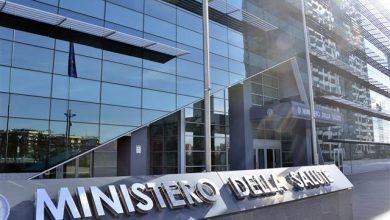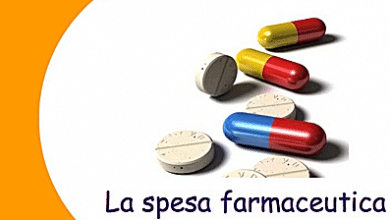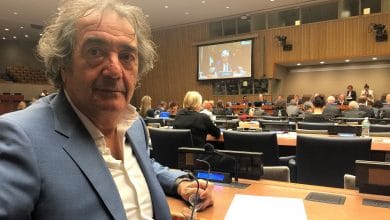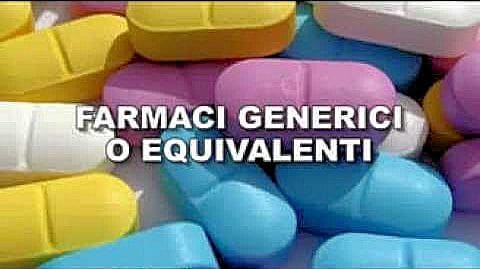
In Italy you already have a network of 95 informants… Yes, plus ten area managers. There will be an evolution. From 1 September, starting from Northern Italy, a dedicated Isf line will be operational for cardio specialists, in order to more incisively promote knowledge and the correct use of the generic. We are carefully evaluating the possibility of creating a separate business unit in ophthalmology
Interview with the managing director Gualtiero Pasquarelli. The change of ownership gives new life to the activities: in view of new products, diversification and landing on the international market
Of Stephen DiMarzio – July 19, 2016 – AboutPharma online
 New products, new markets, new people, new communication strategies and… new ownership. For Doc Generici, the turning point is already underway: the acceleration took place last March with the transfer of 100% of shares from the English private equity fund (Charterhouse) to another (CVC Capital Partners, one of the largest in the world ) for a value of just under 650 million euros. Doc Generici is the largest Italian company in the equivalent sector and holds about 15% of the national market. This year it closes with a turnover of around 170 million euros, relying on around 57 million packs sold, 387 references and 147 molecules in the portfolio. Founded in 1996 by Chiesi Farmaceutici, Zambon and the Canadian Apotex – which sold it to Charterhouse in 2013 – exactly twenty years after its birth, it has never felt so young and CEO Gualtiero Pasquarelli willingly outlines its prospects.
New products, new markets, new people, new communication strategies and… new ownership. For Doc Generici, the turning point is already underway: the acceleration took place last March with the transfer of 100% of shares from the English private equity fund (Charterhouse) to another (CVC Capital Partners, one of the largest in the world ) for a value of just under 650 million euros. Doc Generici is the largest Italian company in the equivalent sector and holds about 15% of the national market. This year it closes with a turnover of around 170 million euros, relying on around 57 million packs sold, 387 references and 147 molecules in the portfolio. Founded in 1996 by Chiesi Farmaceutici, Zambon and the Canadian Apotex – which sold it to Charterhouse in 2013 – exactly twenty years after its birth, it has never felt so young and CEO Gualtiero Pasquarelli willingly outlines its prospects.
After the change of ownership, what's next?
We are evaluating significant diversification both geographically and related to products. In the next five to six years we will reconvert the company: today it is totally focused on Italy and we are already looking at countries like France and Spain that have a legal structure and a consumer approach quite similar to ours. But we are not limited to opening up to the international market and we do not want to remain exclusively in the generic sector.
 Which sectors are you looking at?
Which sectors are you looking at?
Meanwhile, we have just launched our first supplement (Tegradoc) based on Berberine, Chitosan and Monacolin K, which in some way completes our cardiovascular line. It is thought to improve the control of cholesterol and triglycerides in those borderline situations which, according to the doctor, benefit from the improvement of nutrition and lifestyles. In the meantime, we were the first to offer the Omega 3 to the 84% on the market…
And the OTC?
We will certainly not disdain over-the-counter medicines and products that have established brands. However, we have a five-year period ahead of us during which we will evaluate other development options without neglecting the generic core business.
What is the expected investment?
Let's say that we have a sufficiently large credit line available to evaluate projects on the Italian market that go beyond the generic area. Obviously – being CVC a fund – in the face of interesting potential, I don't think it has any difficulty in adding further resources for Doc. After all, only in the reference sector, we already operate today with an operating margin of around 35%-36%, the result of careful management of costs, which allows us to look to the future with optimism in a market that should very soon return to growth at a faster rate than the current one.
 About core business. The market has been stagnant for a couple of years…
About core business. The market has been stagnant for a couple of years…
The last three years has been stingy with important patent expiries. The next peak we will see in 2017-2018. Then the number of deadlines will be such as to bring the generic back into the spotlight. Without the generic, as in the rest of the world, it is difficult to think of a pharmaceutical governance capable of guaranteeing innovation to Italians: specialty patents that are currently worth - at the price of the originators - more than 2 billion euros .
What active ingredients do you have in your sights?
Are many. Already at the end of 2016, the patent of imatinib, a very important drug in oncology, expires. And in February 2017 the patent of the last sartan that still benefits from it expires (olmesartan and its combination with hydrochlorothiazide). There will be indications of pregabalin for neuropathies, dutasteride for prostatic hypertrophy and etoricoxib which is the most widely used anti-inflammatory in its class. And then tadalafil of the same class as Viagra. At the end of 2017 the protection on rosuvastatin will expire, which is still one of the heaviest products for the coffers of the NHS. Ezetimibe and ezetimibe plus simvastatin will also be added. But they are really many in many indications for the most common diseases.
Traditionally, Doc's portfolio has been very focused on cardiovascular (35%). Will anything change?
The speech is slightly different. In fact, our portfolio overweights all chronic treatments. Since cardiovascular is mainly based on these, we monitor it with particular attention, compared for example to what we do for acute therapies, anti-infectives above all. Here we have an honorable market share but we don't shine compared to our competitors. It is also a situation linked to a choice: in general we focus on drugs in which the doctor plays an important educational role. I note that Doc has never abandoned the doctor even when everyone thought he was totally detached from the choice of generics.
In Italy you already have a network of 95 informants…
Yes, plus ten area managers. There will be an evolution. From 1 September – precisely because we have a strong weight in the cardiovascular sector – a dedicated Isf line for cardio specialists will be operational starting from Northern Italy, in order to more incisively promote knowledge and the correct use of the generic. This is an add-on to the current organization that goes to both the doctor and the pharmacist. In the near future we will probably adapt the same model to neurologists and psychiatrists, i.e. to those areas in which the doctor actually plays a fundamental role in managing the transition from brand therapy to generic therapy, explaining the reasons to the patient.
How many people do you hire?
We start with a small additional team of ten medical information specialists. When fully operational we will reach twenty dedicated to the cardiovascular area. But it is not the only novelty in our organization.
There's more?
We are carefully evaluating the possibility of creating a separate business unit in ophthalmology. This is a completely neglected area for generics. The ophthalmologist does not know them and "suffers" their replacement by the pharmacist, without playing an active, proactive role towards the generic.
What products do you have in this area?
All those for ocular hypertension. At the moment, however, we are finalizing the business plan which will need to be validated. The market is very promising, we'll decide at the end of the year.
For some time you have been waging a battle for recognition of the possibility for generic manufacturers to communicate directly to the public the price differences of drugs in range C. What are the reasons and at what stage is the appeal?
We have an open case at the Court of Milan and I think we will have news by the end of the year. The reasons? In Italy we register a paradox: the generic drug has a much higher market share among the drugs reimbursed by the NHS (35% in the off patent one), for which only the price differential is paid, than among those in range C which the citizen pays from his own pocket. There is something wrong.
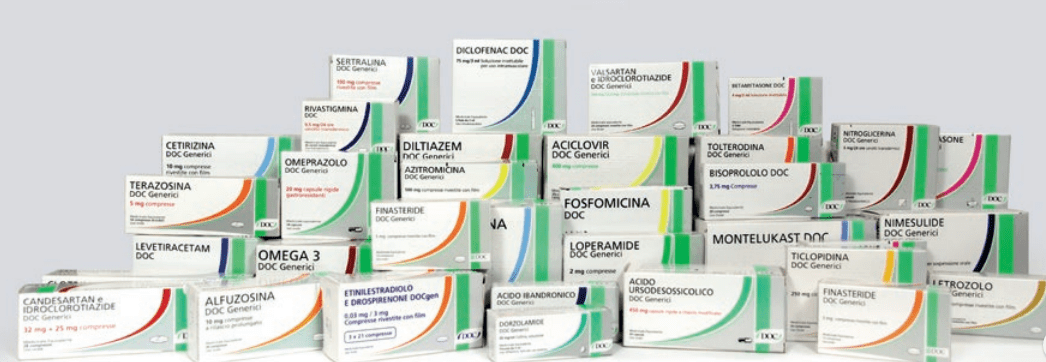 Meaning what?
Meaning what?
Communication is down! While in band A the educational role of the pharmacist and doctor works, in band C there is less sensitivity and the patient is not duly informed. Today, as it is structured, the law is ambiguous and makes it difficult to communicate directly to the consumer that there are drugs equivalent to the original product and what is the personal economic advantage that derives from their use. At the moment it is not clear what can be done and in what form. The patient's right to be fully informed about the savings he can obtain by choosing the generic instead of the specialty, especially when he pays out of pocket, are not protected. The ultimate goal should be to give the consumer the opportunity to choose. Not so today!
But for the legislator, anything that constitutes an inducement to the consumption of prescription drugs is advertising…
Yes, but there is no induction here! The generic does not create further consumption but only replaces what someone already takes with an equivalent product at a lower price. I don't think that informing people that acetylcysteine X or sildenafil Y costs less than the brand will lead to more consumption. Definitely more savings, yes.
According to Osmed, sales of sildenafil have increased…
Of course, but the increase is linked to people who no longer use the web because they were ashamed or because Viagra was too expensive at the pharmacy. Now they use the generic which is a drug controlled, registered and approved by AIFA at a lower price. However, the exploit of sildenafil is emblematic. If it hadn't been for the press that created the case, we would still be in the same conditions as all the other equivalent drugs in class C whose existence is unknown. There has been a lot of talk about parapharmacies and the liberalization of range C. It doesn't seem like a great idea to me if the aim is to stimulate competition. It would be much more effective to allow companies to communicate on prices and price differences in range C. This would increase price competition to the full benefit of those who pay.
Who joins you in this battle? Your competitors do not expose themselves…
Meanwhile, Doc. Assogenerici supports Cittadinanzattiva in a campaign that has just started (#hioequivalent, which started last May ed) and which addresses, among other topics, communication on the generic. We will see.
From AboutPharma and Medical Devices July/August 2016, n° 140
Related news: patent expirations



